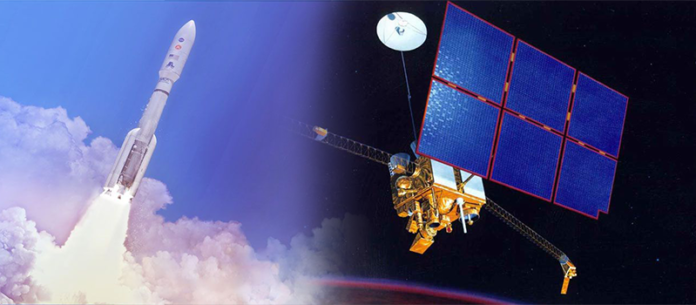With a quest of revealing the mysteries of the Universe, Science in amalgamation with technology has constantly architectured missions, displaying the infinite intellect of the human race. Whether these missions are successful or not, they definitely fulfil the objective of strengthening the foundation for future endeavours. One such mission was the Mars Observer, a robotic space probe launched by the supremo space research centre, NASA in 1992. NASA lost communication with the spacecraft in 1993, three days prior to the date it was supposed to enter Mars orbit. Though the mission couldn’t fulfil its purpose, it gave rise to another mission- The Mars Exploration Program whose pur[ose was to search water on the Red Planet. Let us read more to update ourselves with the mission details.
What we will explore in this article?
- Some Facts about the Mars Observer Mission.
- Objective of the Mission
- Details of the NASA’s robotic probe
- Reasons behind Mission’s Failure
- Wrapping Up
Some Facts about the Mars Observer Mission
- Date of Launch: September 25, 1992
- Site of Launch: Cape Canaveral LC-40
- Mission Type: Mars Orbiter
- Duration the mission lasted: 331 days (NASA lost communication with the spacecraft after that)
- Launched by: NASA/JPL
- Manufacturer of the Spacecraft: General Electric Astro Space
- Mass of the Spacecraft: 1,108 kilograms
- Rocket used to launch the Spacecraft: Commercial Titan III/TOS
- Estimate Cost of the Mission: $813 Million
- Closest Approach to Mars was recorded on August 24, 1993
Objective of the Mars Observer Mission
To know about our neighbour Planet was the ultimate goal of the mission.
- The spacecraft carried all the instruments to study the geology, atmosphere and climate of the Red Planet.
- To study the magnetic and gravitational field of Mars.
- The spacecraft was so designed that it was capable of carrying out a high-resolution photography mission of Mars.
Let Us Dive into the Mission Details
- As per the official site of NASA, “ The spacecraft was based on a commercial Earth-orbiting satellite that had been converted into an orbiter for Mars.”
- This mission was launched after a gap of seventeen years, after the Viking Project. This project was the first spacecraft which landed safely on the surface of the red planet.
- The Mars Observer Mission derived all the information gathered previously by its predecessor, the Viking Project.
- The mission idea was generated in 1984 by the Solar System Exploration Committee which named the project initially as the Mars Geoscience/Climatology Orbiter.
- The spacecraft was supposed to be launched in 1990 by the Space Shuttle Centre but the project got postponed in 1887 after the Space Shuttle Challenger disaster and was rescheduled for launch in 1992.
- On September 25, 1992, the spacecraft was launched at approximately 5:00 pm UTC from Cape Canaveral Air Force Station, Florida.
- It carried the following scientific instruments designed to fulfill the mission objectives.
Gamma Ray Spectrometer
Magnetometer/Electron Reflectometer (MAG/ER)
Mars Observer Laser Altimeter (MOLA)
Pressure Modular Infra Radiometer (PMIR)
Thermal Emission Spectrometer (TES)
Mars Observer Camera (MOC)
Mars Balloon Relay (MBR)
- Orbital Insertion by the spacecraft was supposed to occur on August 24, 1993, but NASA stopped receiving any sort of communication from the observer from August 22, 1992.
Reason Behind the Failure of the Mission
Though no concrete cause was established, the extensive analysis conducted after the project failure came to the following conclusions.
- A pressurized leak of both Hydrogen gas and liquid MMH ( Monomethyl Hydrazine) could have been triggered on the pressurization side of the spacecraft’s propulsion system.
- The high spin rate caused by the leaked gas and liquid would have brought the spacecraft in contingency state interrupting the stored command sequence, thus breaking all lines of communication.
- Moreover, the leak would have led to the discharge of batteries by distorting the orientation of the solar arrays.
- The spacecraft would have entered into a catastrophic spin with damaged electrical circuits.
- Also, in a report, it was concluded that since the spacecraft was a repurposed Earth Science satellite bus, it could not have tolerated the deep space environment.
- As mentioned in the site solarsystem.nasa.gov, when the spacecraft did not re-establish contact after five days of silence, mission planners finally gave up hope on salvaging the mission.
Wrapping Up
Sadly, the mission objectives were not met, instead of all the efforts put in. But the spacecraft sent some useful data while in cruise. As mentioned on the official site of NASA, “ The mission ended with disappointment on August 22, 1993, when contact was lost with the spacecraft shortly before it was to enter orbit around Mars”. Science instruments from Mars Observer are being reflown on other Mars probe missions like Mars Global Surveyor (launched in 1996), Mars Climate Orbiter (1998), Mars Odyssey (2001), and Mars Reconnaissance Orbiter (2005).











































